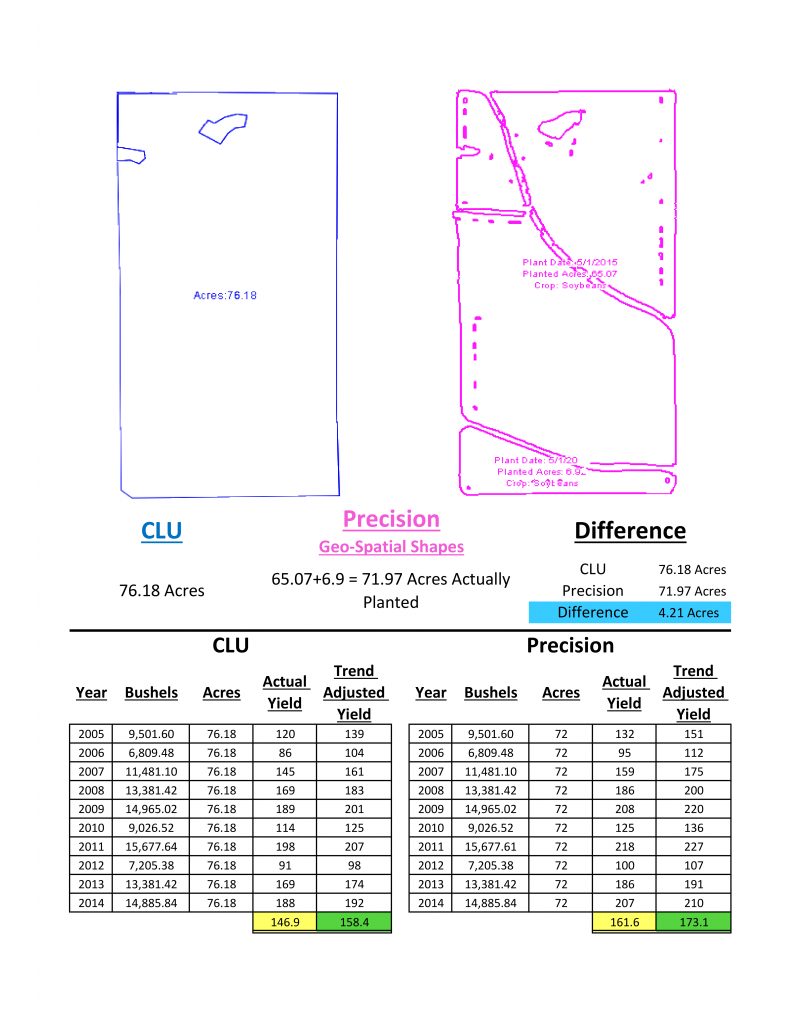Insured’s Responsibilities
- The precision farming equipment the insured uses will capture the proper identifying information within the data.
- Precision farming data must be submitted in a readable format having been properly downloaded/exported per the manufacturer specifications.
- The insured must retain backup copies of their precision farming data
- The insured will provide the planted acreage precision farming data to their agent in a raw data format exported from precision farming equipment
- This must include all RMA required information
- The insured must calibrate the precision farming harvest equipment per the manufactures’ instructions and RMA specifications.
Agent’s Responsibilities
- The agent will map and link county/crops for all policies utilizing precision data before any planted acreage information is submitted to the agent.
- The agent will educate the insured on the insured’s responsibilities in reporting using precision farming data, including requirements required by RMA and the AIP (ARMtech).
- The agent will key the planted acreage per the precision farming data, this will create the insured’s acreage report.
Benefits of Precision Records
Precision Records are considered “Hard Records” and the acres that are reported for the insured will be derived from the precision data, rather than the acres at the FSA. This helps with accuracy as there are no “Permanent Field” acres, etc. to adhere by.
At Auburn Agency Crop we approach the use of Precision Ag data in its truest form. We collect raw data directly from the farmer’s precision agriculture equipment onto a USB jump drive or via cloud file download. We permanently store this data intact and undisturbed prior to processing, and a permanent file of this raw data is archived. Once the raw data is processed the product is a precise geospatial (GPS) field map shape containing the exact information required for reporting planting and harvest data. The exact field boundary, acres, crop, dates, and specific data housed in each data point remain just as the equipment collected.
This provides the farmer not only specificity in their reporting, but can also provide cost savings, APH improvement, and most importantly seal-tight compliance. It also provides a look back opportunity for any compliance question there might be.
There are other acceptable methods or options in precision reporting, but due to the accuracy, and protection to the farmer resulting from this method it has become our only platform for the integration of precision agriculture data with crop insurance reporting.
Questions about who owns the data collected are mute in our office. The farmer retains sole ownership of the raw data provided to us because we are prohibited from sharing to any outside entity, by the standard reinsurance agreement. The penalty for sharing data is the loss of license for the agent, agency, and loss of the Reinsurance for an AIP.
Here we show the difference between what the FSA determined for the Common Land Unit (CLU) compared to the precision planting data retrieved from the producer’s equipment.
In this scenario, the producer ends up paying for more acres than are actually planted. Not only do the incorrectly determined acres add cost to premium, but it actually negatively affects the yield which the producer’s indemnity is set from.
- The producer is able to report acres that disagree with the determined acres of the FSA to their agent/AIP without risking compliance status due to the fact the acres determined by precision agriculture trumps the determinations of FSA.




